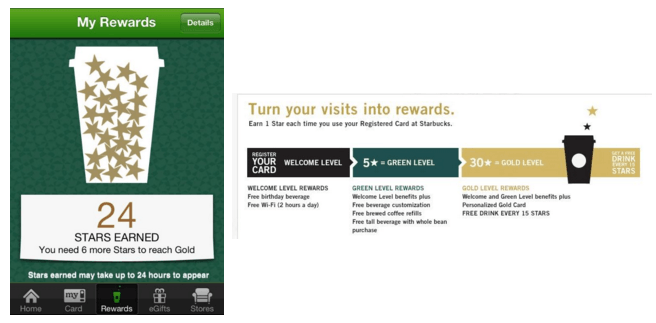Customer service is one of most important aspects of owning a successful business. Whether you are selling a product or providing a service to businesses or consumers, customer service can provide a means of generating loyalty between the customer and company.
The popularity and success of e-commerce has no doubt led to an increase in customer expectations and the growing trend of shopping for the best deal; which challenges businesses to constantly raise their game. Whilst this is advantageous for consumers, businesses need to strategize in order to retain customers and avoid the challenge of losing customers.
At the heart of great customer service are the needs of the customer, both before and after their purchases. The main areas of customer service include:
- Good communication
- Effective feedback
- Commitment to customer service
- Quickly resolving customer problems
A survey conducted by Which saw eight out of 10 respondents claim that customer service can influence their choice of brand, whilst four in 10 would be willing to pay more for a better service. Overall, the findings concluded that 86% of the respondents would be happy to change brand if they were treated poorly.
Similar studies have been conducted which suggests that poor customer service correlates with brand loyalty. Customer service always needs to be at the heart of your business strategies in order to generate continued sales. Although it can often mean investing significant time and money, today’s e-commerce driven market doesn’t finish at the checkout for the typical customer.
According to the White House Office of Consumer Affairs, it’s approximately six times costlier to attract a new customer than it is to retain an existing one. Therefore, it is beneficial for businesses to invest in post-sales strategies, in order to maximize sales figures.
7 Proven Tips to Help Your eCommerce Business Stay Ahead
1. Keep up-to-date
Business coach, Dan S. Kennedy, presented the idea that businesses need to be a living, breathing database, in which information can be accessed almost instantaneously. Kennedy explains, “If you want the strongest possible customer base, you must actively, systematically, and methodically build your customer base. All your contact, prospect and customer data, order and billing information—everything needs to be entered and stored in the database”.
One simple way of having an accessible database is to implement a customer relationship management (CRM) system in order to generate a database of customer’s wants and needs. This can also help in calculating costs, profits and monitor any important feedback. Sales managers are often tasked with re-contacting existing customers in order to maintain a relationship and keep their records updated. This can generate a means of achieving feedback on the service, and perhaps converting the person into a repeat purchaser.
Without breaking the bank small businesses can segment email lists in order of importance, whilst e-commerce apps can investigate conversion rates and provide an insight into areas for improvement.
2. Make customers feel special
In terms of B2C, making a customer feel valued is important in the process of client retention. You can adopt email marketing methods to ensure that your customers are being pointed specifically at the best deals which cater to their needs. The main benefit of email marketing is that it’s really easy to track at low cost. Various tools allow you to analyze data and see which pages are gaining high click-through rates and where existing clients are converting.
3. Use social channels
Customers can judge your business in an instant by looking at your social media channels. If you have plenty of followers and a populated timeline it highlights that you are likely to be a reputable business.
Statistics released by the Global Customers Service Barometer highlighted that consumers are two times as likely to share their bad experiences online than they are to discuss positive experiences. Therefore, it is essential that businesses use their social media as a form of a customer service outlet. You can encourage feedback and adapt your business processes accordingly.

Many e-commerce businesses fail to use their social media channels effectively. Promote your business to its maximum potential by publicizing new products, discount deals, blog content and company news.
4. Create a personalized experience
To achieve customer retention a relationship is forged after the first sale is made. If you own an e-commerce business you may want to implement a number of technical changes to your site, which can help to create a personalized experience. This can include focusing on purchase behavior and installing a “related item’s you’ve viewed” toolbar. Using heat map tools can allow you to view where your customers are clicking on-site. This can then lead you to making modifications to your website in order to create a much easier, personalized shopping process. This article provides a detailed insight into a number of cases studies in which heat maps have been used.
5. Reward loyalty
All customers want to feel like they ’belong’ to a brand. An obvious means of retaining business is to reward those who are loyal. This may be a points system, free postage and packaging or a percentage discount, but brands are now turning to more innovative means of encouraging brand interaction in order to create a sense of business-customer loyalty. One great example found in the survey by TollFreeForwarding.com involved Netflix. The customer who had to cancel his account due to illness was sent a get well card from the business. Similarly, Starbucks’ loyalty program brought great results for the company throughout 2015. Their digital My Rewards app helped to create a 28% growth in users, which in turn, generated an increase of in-store sales by 7%.

6. Get the basics right
The most important tip for businesses is not to run before you can walk. It can often take the time to implement different means generating repeat business. Just remember to provide the best product or service that you can possibly deliver, and the rest should come naturally.
7. Customer service is now customer experience
Today’s e-commerce driven world now relies upon the idea of an “experience”. The customer wants to be looked after before and after they have made the purchase. However, customer service is just one branch in a multitude of marketing options, in order to generate a better customer experience.
This brings up back onto the importance of customer service. Ultimately, by following the tips above, you should generate a stronger and more loyal customer base which will help to build better relationships with your clients in the future. A number of tips on how businesses can help to retain business after an initial point-of-sale can be found here.
Final Thoughts
We all know that acquiring new customers can be tough, and even when you are semi-good at acquiring new customers, the costs are still quite high. With that in mind, it only makes sense that you put in time and effort into treating paying customers the right way. Hopefully these seven tips have inspired you to do so. If so, what are you planning on doing to keep customers coming back? We’d all love to hear your thoughts and opinions in the comment section below!

Jason O’Brien is the COO of TollFreeForwarding.com, an international telecommunications provider based in Los Angeles, which brings businesses around the world instant access to new and existing customers via its huge inventory of international phone numbers.
Recommended articles
 Facebook Ads for eCommerce: 16 Strategies, Examples & Tips
Facebook Ads for eCommerce: 16 Strategies, Examples & Tips
 How to Build a Winning eCommerce Ads Strategy
How to Build a Winning eCommerce Ads Strategy
 Google Ads for eCommerce: Everything You Need to Know
Google Ads for eCommerce: Everything You Need to Know
 10X Your Traffic with PPC Management Software
10X Your Traffic with PPC Management Software
Comments
Powered by Facebook Comments


